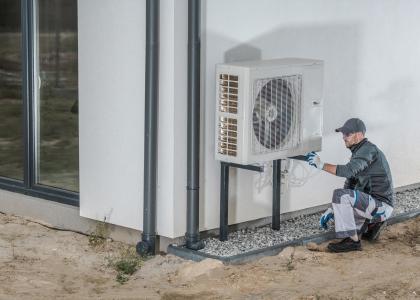There’s a flurry of activity surrounding energy savings goals in Pennsylvania, and what it will mean for energy efficiency will depend on decisions by both regulators and legislators. Pennsylvania first set energy savings goals in 2008, with its Act 129 legislation. The state is now at a key juncture, with the public utility commission (PUC) making a decision soon on the next round of targets. Separately, the state legislature introduced legislation last week that would allow industrial customers to opt-out of Act 129’s successful programs.
Before really digging in to the details of what’s currently at stake, it’s important to understand that Pennsylvania’s energy savings goals have two major constraints under the requirements of Act 129.
First, there is a firm cap on how much utilities are able to spend on efficiency during a given year. The cost cap artificially limits energy efficiency spending well below what is cost effective, and shifts discussion away from ways to maximize long-term savings and toward ways to minimize acquisition costs. It also forces stakeholders and utilities to make difficult trade-offs. An increase in spending on one program equals less dollars going to another.
Second, Pennsylvania is one of the few states where utilities face penalties should they fail to reach their savings targets. In theory, penalties make utilities accountable for meeting targets. In practice, they mean utilities are less likely to take risks, try new program designs, and spend on comprehensive programs.
With these two constraints set by the original legislation, stakeholders have been working diligently to maximize the impact of programs through the regulatory process. The PUC issued a tentative order on March 11, proposing savings targets to be achieved over the next five years. The Tentative Order also included a host of other proposals – everything from accounting methods for savings to low-income program requirements and demand response program design. More than 20 stakeholder groups responded to the commission’s proposal, including utilities, industrial customers, cities, low-income advocates, and clean energy groups. Now, the commission is in the process of weighing these varied responses. And in doing so, they’ve got some big questions to answer.
Did they get the targets right? In the tentative order, the commission proposed targets equivalent to about 0.85% incremental electricity savings per year. They came to this target based on analysis by the independent statewide evaluator that took the cost cap into account when looking at savings potential. However, in comments we assisted the Keystone Energy Efficiency Alliance in preparing, we point out that far more savings could be achievable if the commission considers cost-saving options and new program designs, and consider the historical precedent of over-achievement of goals in Pennsylvania.
What counts? With spending capped, this is a biggie. The commission will have to consider whether utilities that have racked up extra savings in Phase II can roll those savings into Phase III. (We say if you’re going to roll them over, consider raising overall targets to account for these “zero cost” savings!) How utilities will keep track of new savings is also at issue. The commission proposed a cumulative accounting method, whereby measures whose useful lives are shorter than the length of the phase don’t count toward the final target (unless they’re re-installed). Ultimately, the commission should consider the most effective way to keep programs running continuously throughout the phase. To that end, we proposed counting incremental savings achieved over the course of the phase. This should encourage utilities to keep programs running throughout the entirety of the phase, rather than turning programs on and off to meet a goal in the final year. Our research on energy savings goals has found that most states set incremental targets, making it easier to track progress over individual years.
Where should utilities focus programs? The commission proposed a portfolio of programs that focuses on all sectors, with specific savings goals for programs serving low-income customers. Ultimately, the most important thing is that utility portfolios offer a comprehensive array of programs to benefit all customer classes. In the tentative order, state regulators indicated the importance of providing programs to all customer classes. But recently, the discussion of whether all customers should be offered programs has moved into the state legislature as well. State Senator Lisa Boscola recently introduced the Large Commercial and Industrial Opt-Out of Act 129. This bill would significantly undermine energy efficiency advancements made in Pennsylvania to date, allowing large customers to opt out of contributing to efficiency programs. Allowing large consumers to opt out has two problems. First, large-consumer energy savings tend to be lower-cost than are savings from other sectors, particularly important in view of the cost cap. Secondly, energy efficiency is a resource that benefits all users, so energy efficiency deployed anywhere in a system benefits everyone. Allowing large customers to "go it alone" and not participate in Act 129 programs would eliminate a proven low-cost resource. The bill would lead to lower overall energy savings and higher costs for all ratepayers (including the very customers leading the opt-out charge).
Big decisions need to be made in the Keystone State. Rather than building an additional barrier to energy efficiency, state legislators should consider ways they can support regulators in increasing energy and bill savings for Pennsylvanians. Regulators, meanwhile, must focus on the details. With proper guidance, utilities can deliver deeper savings to residents and businesses across the state, setting up a long-term strategy for success.



